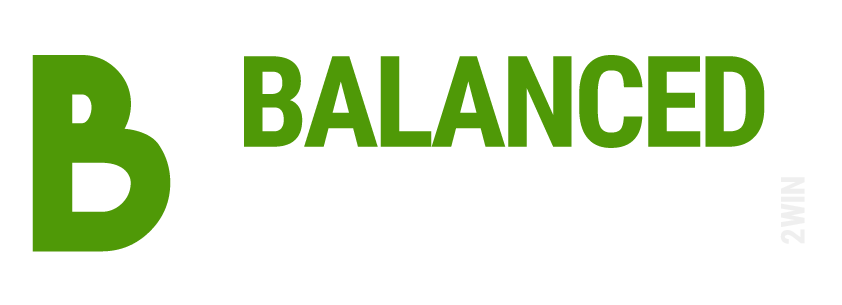The Balanced Scorecard Model
What is the best strategic model that will help you to link everyday organizational performance with core values thereby, driving your organization towards fulfillment in a long-term?
The answer is ‘Balanced Scorecard‘.
The balanced scorecard framework will assist you to connect the dots, in turn, creating the common ground between strategic and operational performance management. The framework solves the issues such as lack of alignment, misallocation of resources, short-term focus, and a failure to perceive risk, among other things. Organizations typically manage their long-term strategic performance independently from their short-term operational performance.
A frequent, unintentional, result of this approach is that strategic objectives are not achieved, and operational objectives are.
This occurs because:
- Operational objectives are not aligned with the strategic objectives
- Resource allocation priorities are given to short-term needs
- Most of management’s time is focused on the urgency of achieving quarterly results
- Short-term success masks the risk of achieving the strategy
With the advent of the balanced scorecard, the common ground between strategic and operational performance management is created but the struggle persists i.e., to articulate exactly what that common ground is and how it works. For example, organizations working on implementing the Balanced Scorecard strive to operationalize the strategy so that employees can see how their day-to-day work activities contribute to achieving the strategy.
The Performance Management Framework
The performance management framework (“balanced scorecard framework”) provides that common ground for discussing and answering these questions and lays down a foundation upon which a successful performance management program can be established.
The framework below shows how alignment is done with the Deming improvement cycle of Plan-Do-Check-Act. The framework also aligns with the four sets of performance management activities. These sets of performance management activities are called phases in the framework. Shortcomings in implementing various aspects of these phases lead to the strategy achievement failures.
Performance management is comprised of four major sets of activities:
- Defining objectives and standards
- Allocating resources and taking actions to achieve the objectives
- Analyzing and reporting on results
- Taking necessary corrective actions to mitigate risk and ensure success
Each of the four phases of the framework has strategic and operational components. These components have the same name in each of their respective phases. The components are called Objectives in the Plan phase, Projects in the Do phase, Reports in the Check phase and Reviews in the Act phase.
Planning Phase
Planning is the phase where performance objectives and standards are defined, articulated and communicated to the rest of the organization.
- Strategic Planning & Outcome: Strategic planning is the process of establishing an organization’s long-term (typically three to five year) goals and an approach for achieving them. The outcome of the process is a set of strategic objectives and performance standards for evaluating achievement progress.
- Operational Planning & Outcome: Operations planning is the process of establishing an organization’s short-term (less than three years) goals and an approach for achieving them. The outcome of the process is a set of objectives and performance standards which describe how the organization’s resources will be allocated and utilized in support of the long-term strategy.
Do Phase
The Do phase is where the action is taken to achieve the stated objectives at the targeted performance levels.
Examples:
- A project to implement a new technological capability in support of the strategy
- A project to improve on-time delivery performance
Action may also be taken in the form of corrective action when progress is not being made at the desired rate. This is indicated by the feedback loop from the Act phase.
An important aspect of the Do phase is the allocation of resources and authorization of expenditures related to the projects selected. A facet of operations that must be considered within the Do phase is Daily Operations.
Daily Operations
Daily Operations are what the organization does daily to meet its business needs; things such as designing, delivering, taking orders and closing the books. These are processes that are executed in support of operational objectives. The performance of these processes is measured, reported on and reviewed. Based on the reviews, process improvement projects are undertaken, when necessary, to improve process performance.
Check Phase
The Check phase is for measuring results and analyzing performance. Measuring describes what happened and the analysis describes why it happened and makes recommendations for management action.
When describing the why, it is important to look not only at the related measures but at other factors such as economic and political situations, supplier and customer viability, and social and cultural needs and events.
Act Phase
The Act phase is where the action is taken by management based on the performance analysis provided in the Check phase. Some of the possible actions that could be taken are authorizing corrective actions to mitigate risk, communicating decisions to the affected groups and individuals, authorizing a change in priorities that will be acted upon in the Do phase, and recommending a change in objectives that will be acted upon in the Plan phase.
The Interface
The description of the four phases above sounds a lot like any other management methodology. The difference with the performance management framework is that it considers the management of performance to be a system with two major components: strategic and operational.
Just like any system, the interface between the strategic and operational components of each phase of the performance management framework is where success or failure is determined. The framework identifies the practices and methods used to manage the strategic-operational interface within each phase of the Framework.
Maps
In the Plan phase, Maps are used to define the relationship between strategic and operational objectives. While there may be local operational objectives that do not necessarily have a relationship to the strategy, the bulk of the operational objectives should be short-term, local versions of the long-term strategic objectives. Maps, strategic and operational, provide a proven and easy-to-use mechanism for articulating and managing the objectives and their interrelationships and alignment.
Portfolio
In the Do phase, a Portfolio is used to collect, prioritize, select, authorize and manage strategic, operational and process improvement projects. This is perhaps the most difficult interface to develop and manage as most organizations have existing, well-developed, separate practices for managing strategic, operational and process improvement projects.
A portfolio approach introduces the concept of viewing all projects together and making selection decisions based overall rather than on the three individual groups. This is done within the constraints of budget limits and resource availability as well as the management established selection criteria and weighting factors. Having a well-managed portfolio ensures an effective balance between strategic and operational projects while maintaining the desired level of performance in daily operations.
Scorecard
For the Check phase, Scorecards are used to document and report on operational and strategic measures and performance analysis and the roll-up relationship between operational and strategic measures. Well-planned scorecards allow a proper focus on strategic and operational performance measures.
Governance
Finally, Governance is used in the Act phase to establish policy and provide forums – typically, operational and strategy review meetings – for management risk analysis and decision-making. It is not sufficient to only have a calendar of events for strategic and operational reviews. In addition, a management policy of open and frequent communication between strategy and operational management functions is essential.
Governance focused on 2-way open communication of strategic and operational priorities and issues along with an integrated management calendar ensures the following:
- Decisions from the strategy reviews flow effectively to the appropriate operational entity
- Decisions and issues related to strategy from the operations reviews become part of the agenda for the strategic reviews
Maintaining the Balance Determines the Success or Failure
- Performance success means that an organization’s short and long-term goals are achieved and its daily operations function smoothly
- Effective performance management must address both the strategic and operational aspects of performance
- The framework provides a foundation for successful performance management by utilizing a proven improvement management construct (Plan-Do-Check-Act) and establishing a well-defined interface between the strategic and operational components
Click here to read about Balanced Scorecard Software.

